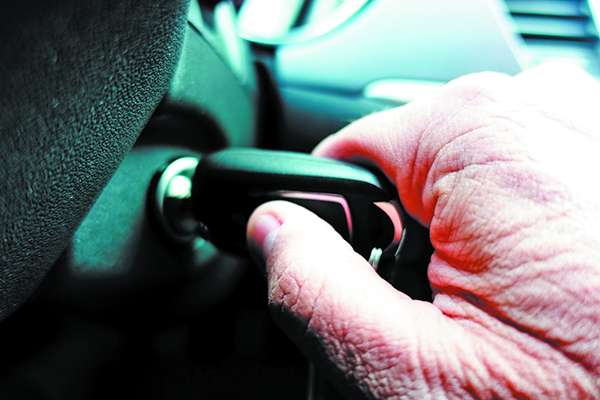They can help your nagging back, hip or knee pain…
You may not be surprised if you feel a little stiff or achy after doing something you ordinarily don’t do—such as sleeping on one side all night long…playing an especially tough match of tennis or round of golf…or hunching over a computer for long hours.
What does surprise most people is the long-term effect of habitually doing any of these things. The result is out-of-balance muscles—an often hidden cause of chronic pain and tightness in the back, knees, hips, shoulders and/or ankles.
Muscle imbalances don’t happen overnight, but if certain activities are repeated day in and day out, the pain often goes undiagnosed and may drive sufferers to take potentially dangerous medications or even get surgery.
Joel Harper, a leading New York City–based personal trainer, knows how harmful muscle imbalances can be and has created specific muscle-balancing stretches for the Olympic medalists and other clients he works with. Here are the habits that most often cause muscle imbalances—and the simple daily exercises that help…*
- Sleeping on the same side every night. This habit compresses one shoulder and hip.
The fix: Remind yourself when you go to bed that you want to start alternating sleeping sides throughout the night. After a while, your habit may change. Also, do the passive spinal twist below each morning upon waking to elongate the muscles on both sides of your body.
What to do: While lying on your back in bed, interlock your fingers behind your head. Keep your elbows out, and lift your knees into a 90-degree angle. Then, keeping your torso flat and level, gently drop both of your knees to one side as far as you comfortably can, while looking straight up, and take five deep breaths. Repeat on the other side. If you notice more tightness on one side, repeat the stretch on that side for a few more breaths.
Also: Place a pillow between your knees when sleeping to help keep your hips and spine aligned.
- Too much sitting. Sitting for hours on end at a desk, while traveling or even on the couch tightens the hip flexors (the muscles that contract when lifting your knees to your chest) and weakens the opposing muscles of the buttocks, or “glutes.” As a result, your pelvis tilts downward, stressing your lower-back muscles.
The fix: Walk around for at least five minutes every few hours. Also, try the seated airplane stretch.
What to do: Sit in a chair with your feet flat on the floor. Then place your right ankle on your quad, about an inch above your left knee. Next, rest your right elbow on top of your right knee, and place your right hand on your right ankle. Gently lean forward, until you feel a comfortable stretch, while looking ahead, not down, and keeping your back straight. Hold for 30 seconds, then switch sides.
- Repeated one-sided activities. Stand shirtless in front of a full-length mirror. If one shoulder appears slightly lower than the other, it may be because you always keep your computer mouse on the same side…favor your right or left leg when crossing your legs…or always wear a purse, backpack or other bag on the same side. These activities cause a muscle imbalance in which your back becomes overworked on one side but underused on the other. Sports in which one side is dominant, such as tennis, golf or bowling, also can cause this type of muscle imbalance.
The fix: Alternate the shoulder on which you carry your bag, the way you cross your legs and, yes, even the side of the computer where you place your mouse (this will help you become ambidextrous). Then try a stretch for your chest.
What to do: With your fingers interlocked behind your head and your elbows out, slightly move your hands away from your head and hold for five deep inhalations. Do this a few times each day. Look straight ahead during this stretch.
If you play a racket sport or enjoy another sport in which one side is dominant, incorporate strengthening moves for the opposite side when you’re not playing.
Also helpful: Consider taking up a new activity that uses muscles on both sides more equally, such as swimming, yoga or tai chi.
*It’s always wise to consult a doctor before doing any new exercises.



